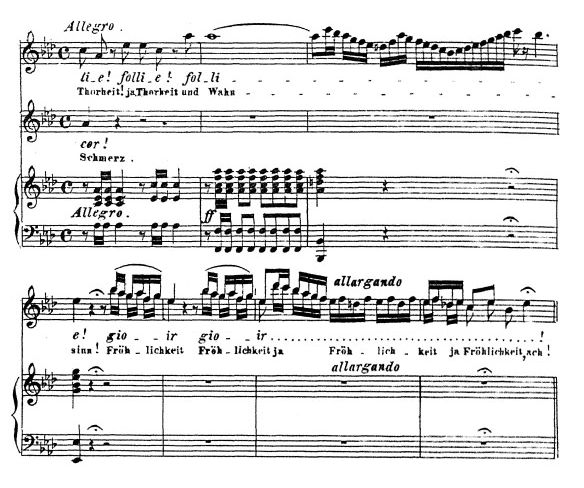
“Navigate the Passaggio”
A common myth that can worry many a singer is that of the “Passagio.”
This term means passage. It has been thought of as the passage from chest voice into head voice; beginning on a certain note and ending on another note. This passagio gave rise to the idea that one must consciously do something, like a specific and exact modifying of vowels in order for one to be successful in the navigation of this passagio.
In my own voice, I became terrified of this “zona di passagio” with obsession over how to make it through it and get into my head voice. Of course, I never was able to successfully navigate the passagio in the manner that it is commonly thought of and taught.
So, is the passagio a real thing? Well, it helps to understand how our two main muscles (closer & stretcher) work together to adjust the vocal cords for pitch, volume, and vowel.
For each and every note we sing there is an exact width, length, and depth of vocal cords vibrating. If our voice is functioning perfectly – the closer & stretcher doing their jobs – then there is a different adjustment on every pitch.
You might have the thought of percentages. Maybe on the very bottom note of “Full Voice” one would have 99% Chest and 1% Falsetto. In the very middle it would be a 50/50 split. At the very top it would be 1% Chest and 99% Falsetto.
So what? Well, in thinking about navigating the passagio we might think that we get to a certain note and then make a shift, and then a little higher up we reach another note and make another shift. Yet, this idea does not match how the voice actually works when it is functioning in a healthy way.
In a healthy functioning voice, the adjustments of the vocal cords and the vowel happen on each and every pitch so that there is no passagio per se. There is only one little step after another. Of course, the singer will feel something as they shift from the bottom of their voice to the top in terms of texture and vowel – heavier to lighter, bigger to smaller, shorter to taller, brighter to darker, open to closed, pure to round.
However, if the muscles are working right then one can sing up the scale and feel this shifting occurring gradually on each pitch of the scale. It is helpful to know and think about this being adjustments made over the entire range, not just within a little passage.
More than that, this shifting should not really be considered a conscious thing one does. Seriously, good luck trying to voluntarily and directly control that which must be approached indirectly and is actually part of systems that are treated as involuntary.
Rather, as the muscles work better, notice healthy feeling associated with healthy muscular function. With enough repetition, we remember the feeling. Our mind will give the command. Our subconscious takes over and accomplishes the work. The passagio is not something that one should worry about.
As one is trained in healthy function, the vocal cord and vowel adjustments fall under the purview of the principle of automaticity. We can trust that our body will make the necessary adjustment all along the way, little bits by little bits. We will know it has done so by the accompanying correct feel and a great sound.
about the author
Allen Rascoe Allen has been enjoying singing since he was a little kid. He officially studied voice at ECU and USC. However, he ran... Read More

RECENT ARTICLES
-

Career Your Opportunities for a Fulfilling Career in Singing
-

Basic Skills, Beginners, Tips Tips To Improve Your Singing Voice
-

Exercises, Warmups 10 Vocal Warm-ups to Change the Way You Sing
-

Basic Skills, Beginners, Exercises, Songs, Voice Teachers, Warmups What is My Vocal Range – Identify, Master and Expand Your Range
RECENT IN KNOWLEDGE
Recent Topics
- Beginning Voice Lessons (1)
- Breathing Techniques (1)
- Confidence (1)
- Experienced Teacher (1)
- Kids Singing Lessons (1)
- Musical Career (1)
- Practice (1)
- Private Lessons (1)
- Professional Singer (2)
- Sing (1)
- Singing Teachers (2)
- Style (1)
- Teach Online (1)
- Vocal Exercises (1)
- Vocal Health (1)
- Vocal Music (1)
- Vocal Pitch (3)
- Vocal Range (4)
- Voice Coach (1)
- Voice Exercises (2)
- Voice Training (4)
- Young Vocalist (1)
Categories
- Basic Skills (7)
- Beginners (8)
- Career (2)
- CCM (1)
- Contemporary Commercial Music (1)
- Crossing Over (1)
- Exercises (2)
- Online Lessons (3)
- Online Voice Lessons (1)
- Songs (2)
- Students (6)
- Tips (4)
- Vocal Coaches (1)
- Voice Teachers (2)
- Warmups (2)
Testimonials

















